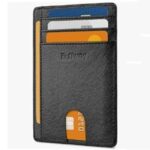Camera
Having a travel camera is essential for capturing the essence of your adventures, preserving memories, and creating high-quality images that a smartphone might not be able to achieve. Here are the key needs that justify having a dedicated travel camera:
1. Image Quality:
- High Resolution: Travel cameras typically offer higher resolution than most smartphones, allowing for detailed, sharp images that are ideal for printing or large displays. This is particularly important for landscape photography, wildlife, and night shots.
- Better Low-Light Performance: Cameras with larger sensors and better lenses excel in low-light conditions, capturing more detail and reducing noise in the final image, which is crucial for evening or indoor photography.
2. Versatility and Control:
- Manual Controls: Unlike smartphones, travel cameras often come with manual controls for exposure, focus, aperture, and shutter speed, giving photographers the ability to fine-tune their shots according to the situation.
- Interchangeable Lenses: For those who want more flexibility, mirrorless and DSLR travel cameras allow the use of different lenses, from wide-angle for landscapes to telephoto for wildlife, which enhances the creative possibilities.
3. Durability and Build Quality:
- Weather Sealing: Many travel cameras are built to withstand harsh conditions, including rain, dust, and extreme temperatures. This is essential for adventurers who travel to diverse environments such as deserts, mountains, or tropical rainforests.
- Ruggedness: Some cameras are designed to be shockproof, waterproof, and dustproof, making them ideal for outdoor activities like hiking, diving, or skiing.
4. Zoom Capabilities:
- Optical Zoom: Travel cameras often come with superior optical zoom capabilities compared to smartphones, allowing travelers to capture distant subjects, such as wildlife or far-off landmarks, with clarity and detail.
5. Battery Life:
- Extended Usage: Dedicated travel cameras usually have longer battery life compared to smartphones, making them more reliable for long days of shooting without frequent recharging. Some cameras also allow for swappable batteries, ensuring you don’t miss any important moments.
6. Storage and Backup:
- Expandable Storage: Travel cameras typically use memory cards (like SD cards), offering expandable storage options that can hold thousands of high-resolution images and hours of video, ensuring that you never run out of space during your travels.
- Raw Image Capture: For serious photographers, the ability to shoot in RAW format provides greater flexibility in post-processing, allowing for significant adjustments to exposure, color, and detail without degrading image quality.
7. Creative Features:
- Advanced Shooting Modes: Many travel cameras offer a variety of shooting modes, such as panorama, HDR, time-lapse, and long exposure, which allow you to capture unique and creative images that might be challenging with a smartphone.
- 4K Video: For those who also want to capture high-quality video, many travel cameras offer 4K recording, which provides a high level of detail and cinematic quality.
8. Portability:
- Compact Design: Many travel cameras, especially mirrorless and compact models, are designed to be lightweight and portable, making them easy to carry around without adding much bulk to your luggage.
- Travel-Friendly Accessories: Cameras often come with or are compatible with a range of travel-friendly accessories, such as lightweight tripods, protective cases, and camera straps, which enhance the shooting experience while on the go.
9. Connectivity and Sharing:
- Wi-Fi and Bluetooth: Many modern travel cameras come with built-in Wi-Fi and Bluetooth, allowing for easy transfer of photos to your smartphone or tablet for quick sharing on social media or cloud storage.
- GPS Tagging: Some cameras include GPS functionality, which automatically tags your photos with location data, helping you remember where each photo was taken and allowing for easier organization.
10. Professional Output:
- High-Quality Prints: If you plan to print large photos or create photo books, the higher resolution and better image quality from a travel camera will produce superior results compared to smartphone images.
Conclusion:
A travel camera meets the needs of travelers who are serious about photography and want to capture their experiences with the best possible image quality, versatility, and reliability. Whether you’re a casual traveler or a professional photographer, having a dedicated camera can significantly enhance your ability to document your journeys and create lasting memories.







